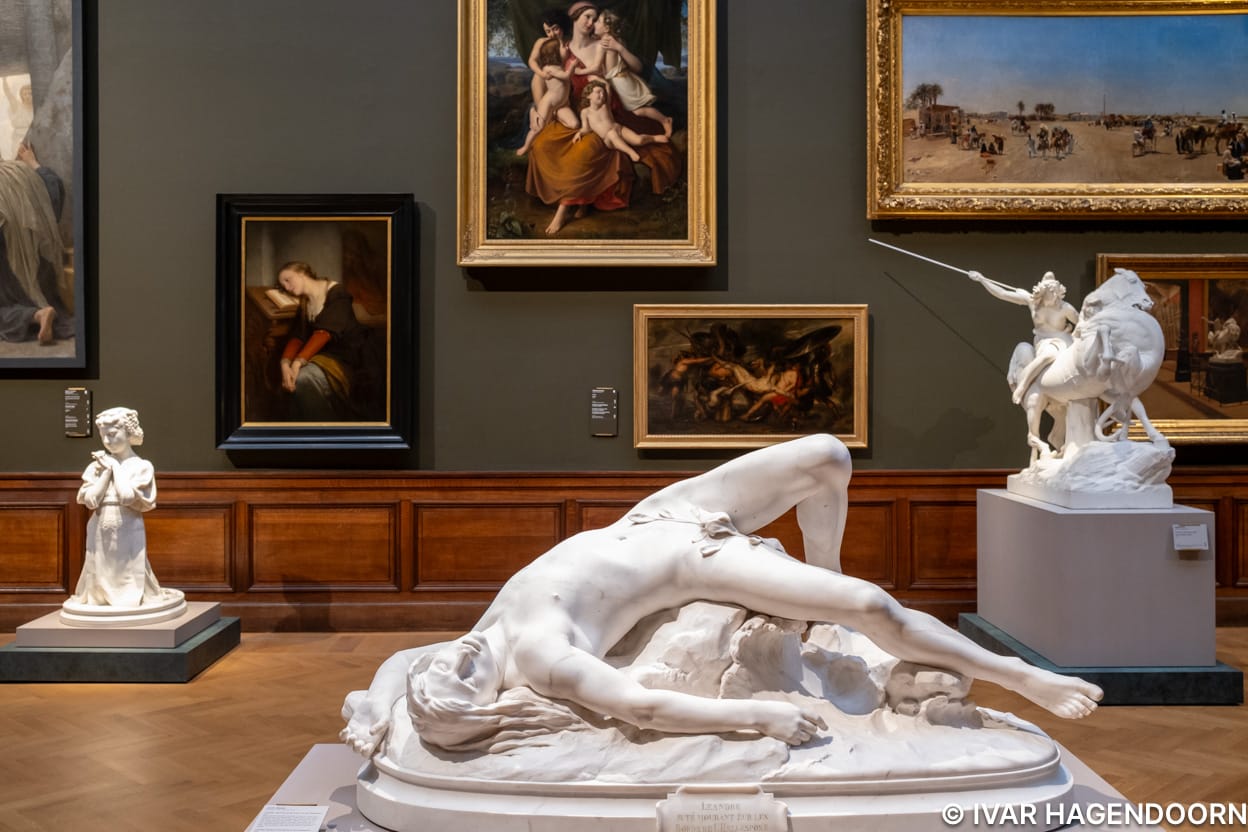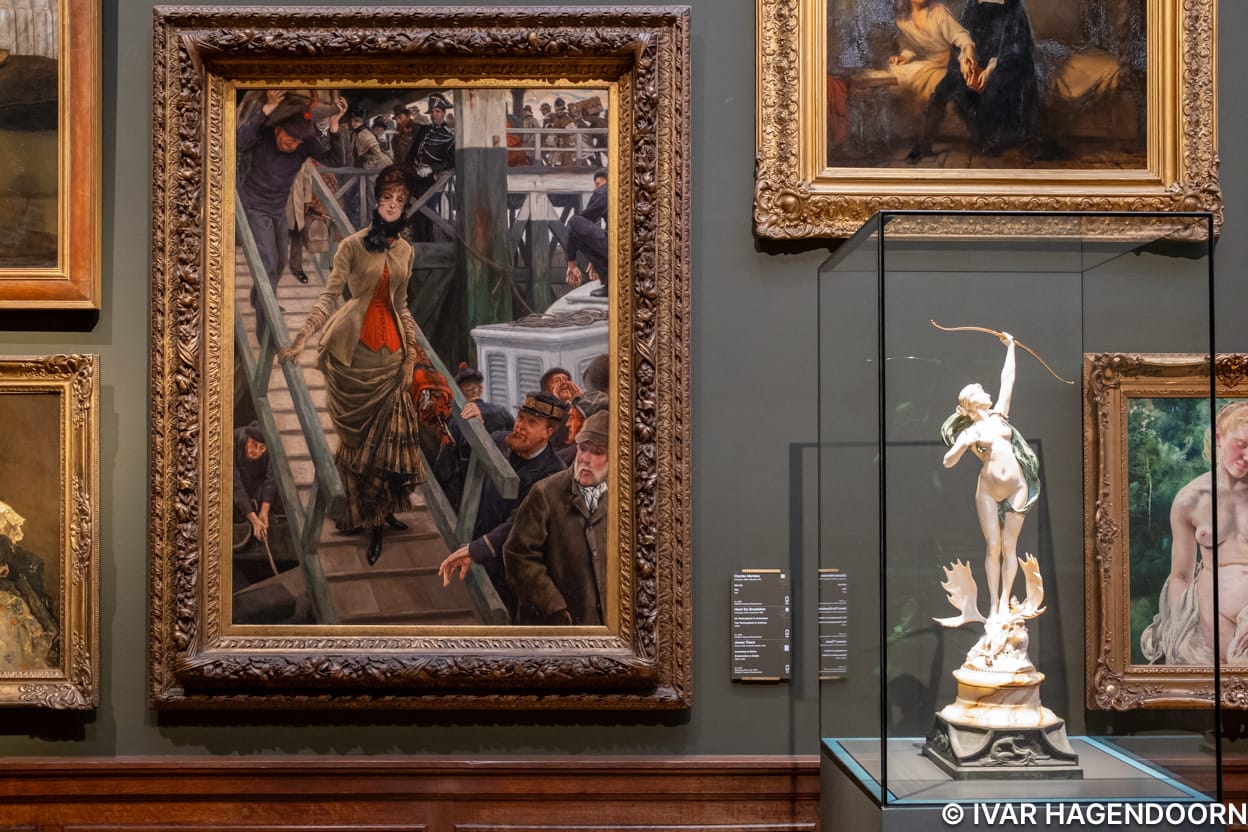James Ensor (1860-1949) is one of Belgium’s most prominent artists of the late nineteenth and early twentieth century. Today, Ensor is best known for his colourful paintings of masked faces, skulls and skeletons. But there is more to Ensor than a parade of carnivalesque figures, as can be seen at a large retrospective at the Koninklijk Museum voor Schone Kunsten in Antwerp. He was in fact a highly versatile artist who mastered various styles and painted everything from interiors and still lifes to religious themes and social satires. He is rightly regarded as one of the leading Expressionist artists, alongside Edvard Munch, Emil Nolde and Oskar Kokoschka.
James Ensor was born in Ostend, the son of a Belgian mother and an English father. After a brief stint at the Académie Royale des Beaux-Arts in Brussels he returned to Ostend, where he would remain the rest of his life. From 1880 until 1917, he occupied a studio in the attic of his parents' house. It should be noted that at the time Ostend was not a total backwater. It was a popular resort town where Belgium’s well-to-do would seek refuge during the summer months. Though not exactly Cannes or St Tropez it boasted a casino and its own small-town bohemia. At the start of his career Ensor produced a series of works portraying the lifestyles of wealthy bourgeois women who lived in Ostend. The setting is typically the living room of his own parental home. Interestingly, twenty years later he revisited some of these early paintings, recreating them in a different, lighter palette to match the style of popular upcoming artists such as Rik Wouters.
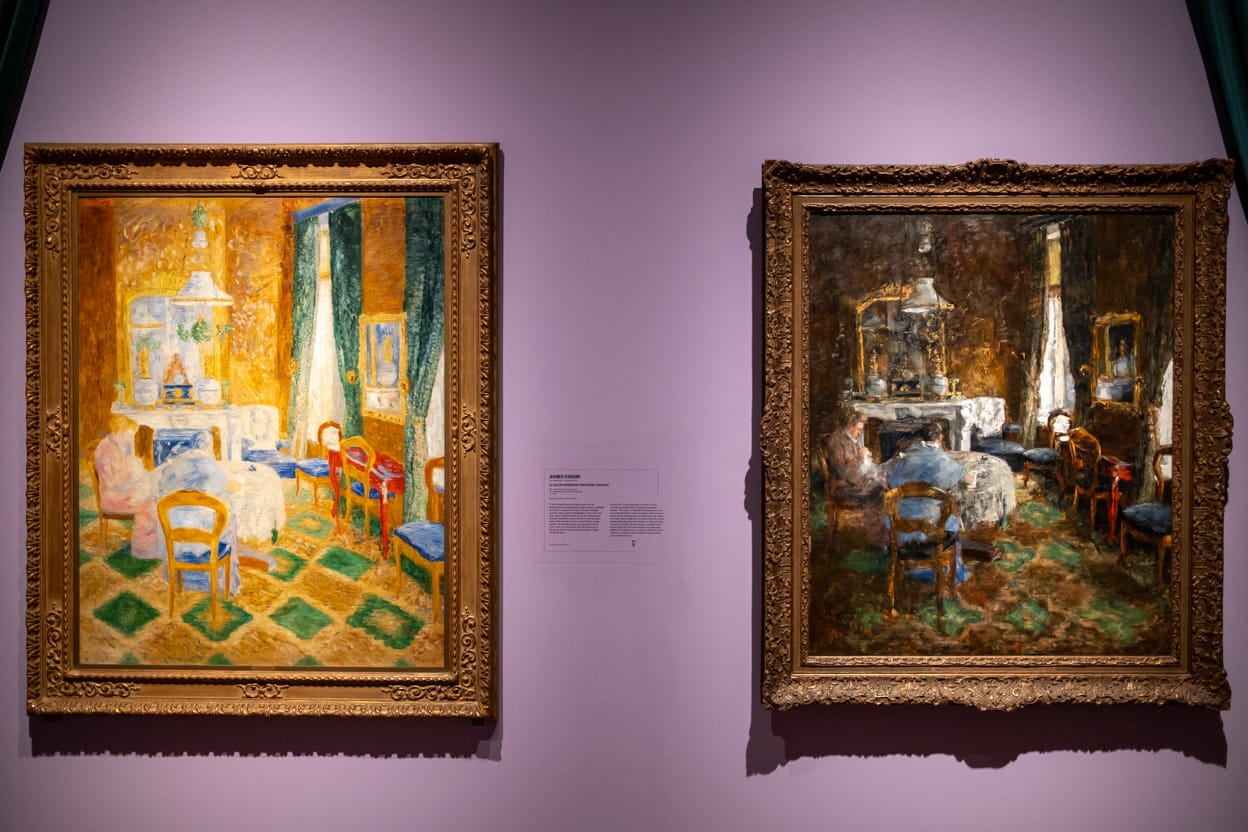
Ensor’s early paintings belong to the tradition of 19th-century realism. They are quite good, though not nearly as distinctive as his later work. In 1882, at the age of 22, he painted his first masterpiece, “The Oyster Eater”. It shows a woman sitting behind a cluttered table eating a sumptuous meal. The Antwerp Salon rejected the work in 1882 and the following year the art society L’Essor in Brussels likewise refused to exhibit it on account of its unconventional composition. The composition is indeed rather unusual and holds the middle between a portrait and a still life. Its use of colour shows the influence of Manet. Indeed, the bright yellow lemon in the foreground could well be a nod to Manet.
A couple of years later Ensor came under the influence of Monet and Renoir and by 1886-87 his technique and colour palette bear the stamp of impressionism. From the beginning it is clear that Ensor wants to move beyond impressionism. One painting from this period, “Les Enfants à la Toilette” (1886) could be mistaken for a work by Edvard Munch. The exhibition includes some works by Manet, Monet, Renoir, Redon and Munch, which makes for an interesting comparison.
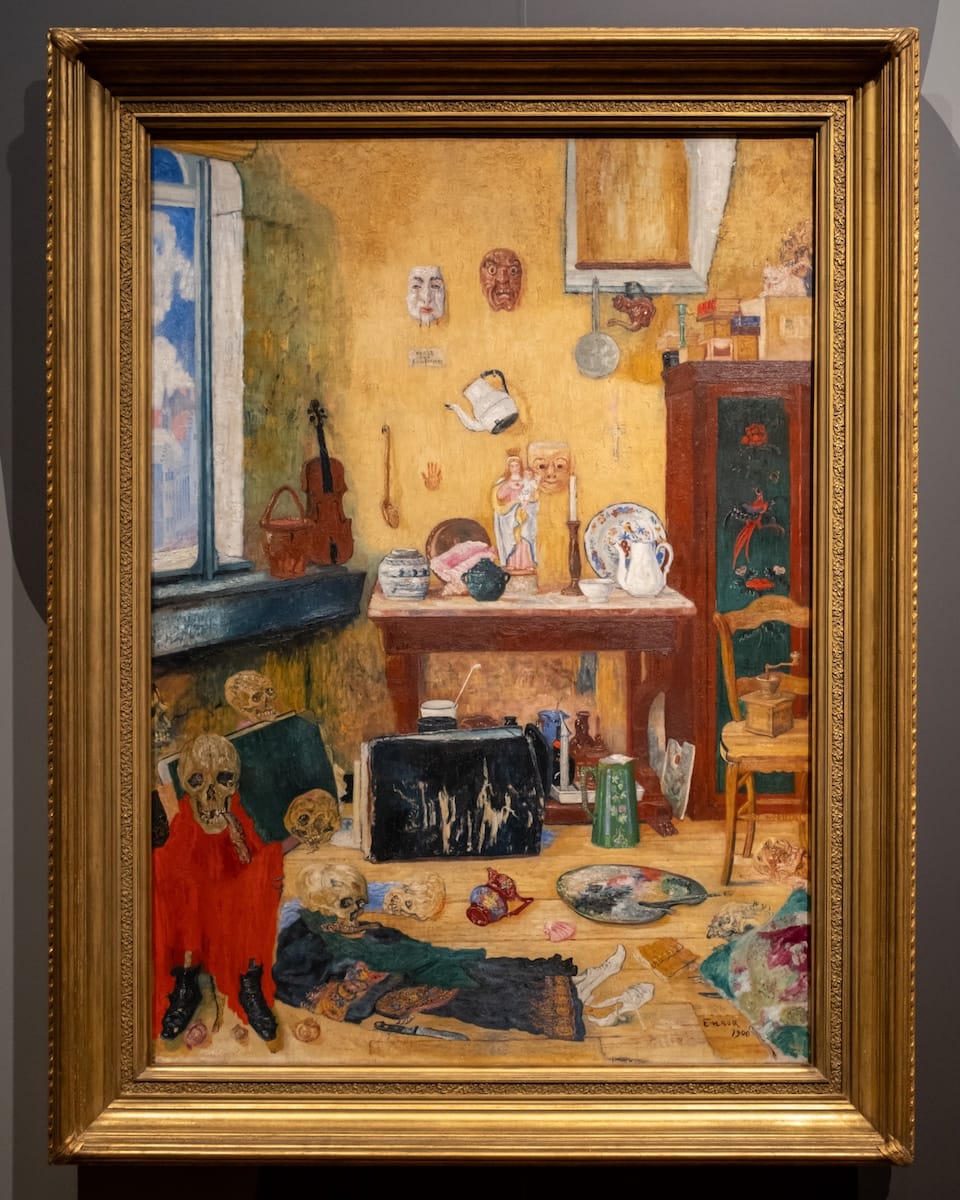
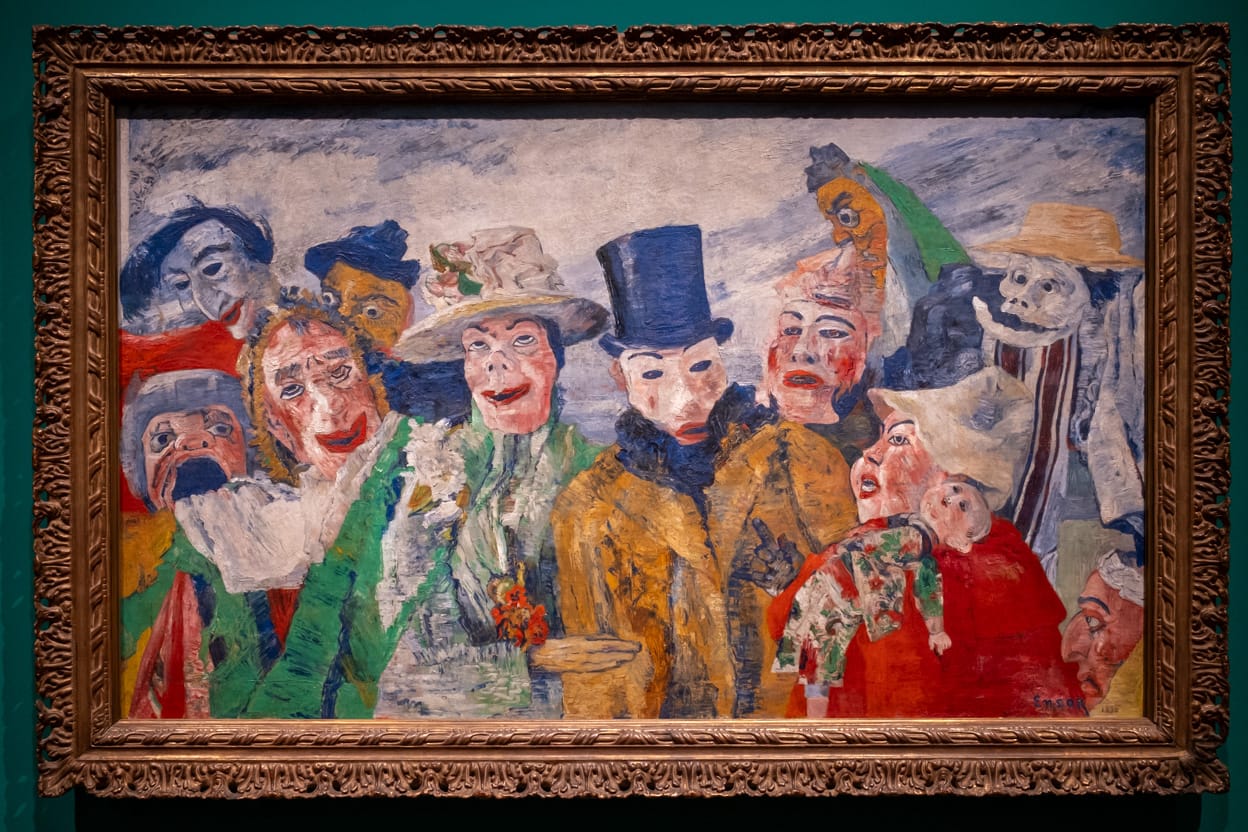
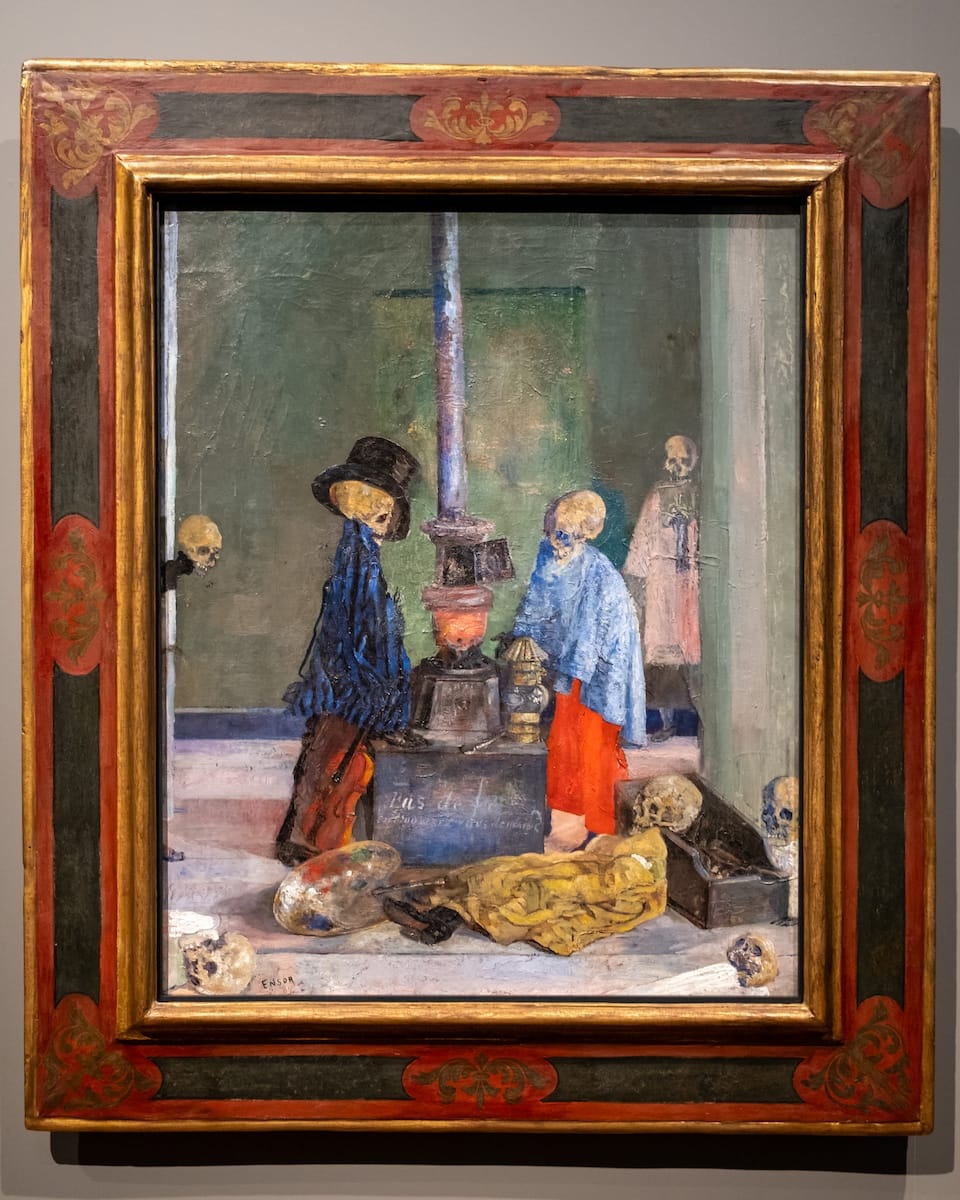
James Ensor, Skeletons in the Studio, 1910 (left), The Intrigue, 1890 (middle), Skeletons Trying to Warm Themselves, 1889 (right)
In 1883 Ensor painted his first masked figures, “The Scandalised Masks”, shortly followed by his first skeletons. Over the next twenty years Ensor would keep returning to both figures. Ensor uses masks not to conceal but to expose his subjects. He wants to show people as they really are: foolish and unpleasant. It is with these paintings that Ensor would earn worldwide recognition and for which he is still famous. His work also inspired contemporaries such as Emil Nolde, whose work is also represented in the exhibition.
During the late 1880s and 1890s Ensor produced a wide range of highly imaginative works. Around this time he also turned his attention to religious themes, creating one of his greatest works, “The Entry of Christ into Brussels in 1889”, which sums up all of Ensor’s obsessions and anxieties, and which, unfortunately, is not included in the exhibition because it is too fragile to travel. During this period Ensor also painted numerous caricatures, which reveal his great sense of humour.
The exhibition includes a rather peculiar small undated abstract watercolour. Ensor signed the painting, which suggests that he either deliberately created an abstract composition or that, at the very least, he considered it a finished painting, and not some spontaneous scribbles and brushstrokes.
By 1905 Ensor was an established artist, but his most productive years were behind him. He continued painting, but the creative flame had dimmed and these later works are less interesting than the ones he created in the first two decades of his half-century career. Paradoxically, Ensor rose to fame at the time when he had all but given up painting. In 1929 Ensor was made a baron by King Albert I of Belgium and in 1933 he was awarded the prestigious Legion d’honneur.
It's a bit unfortunate that the organizers thought it necessary to add numerous props, - curtains, a magic lantern show, carnival masks, a puppet house version of Ensor's workshop and a ringmaster at the entrance -, to enliven the exhibition. It didn't have much added value and it distracted from the works on show. Ensor's work can perfectly stand on its own.
If you cannot make it to the exhibition, in addition to the catalogue there is a choice of richly illustrated books on James Ensor, including a small budget friendly book by Taschen.
Ensors stoutste dromen. Het impressionisme voorbij (In Your Wildest Dreams. Ensor Beyond Impressionism) is at the Koninklijk Museum voor Schone Kunsten Antwerpen until 19 January 2025.
Addendum
I had been waiting for an opportunity to visit the KMSKA, which reopened in September 2022 after a decade long renovation. The result is pretty awesome. The architects inserted a modern building into the old building while also retaining some of the old rooms. The result is a fascinating hybrid building.
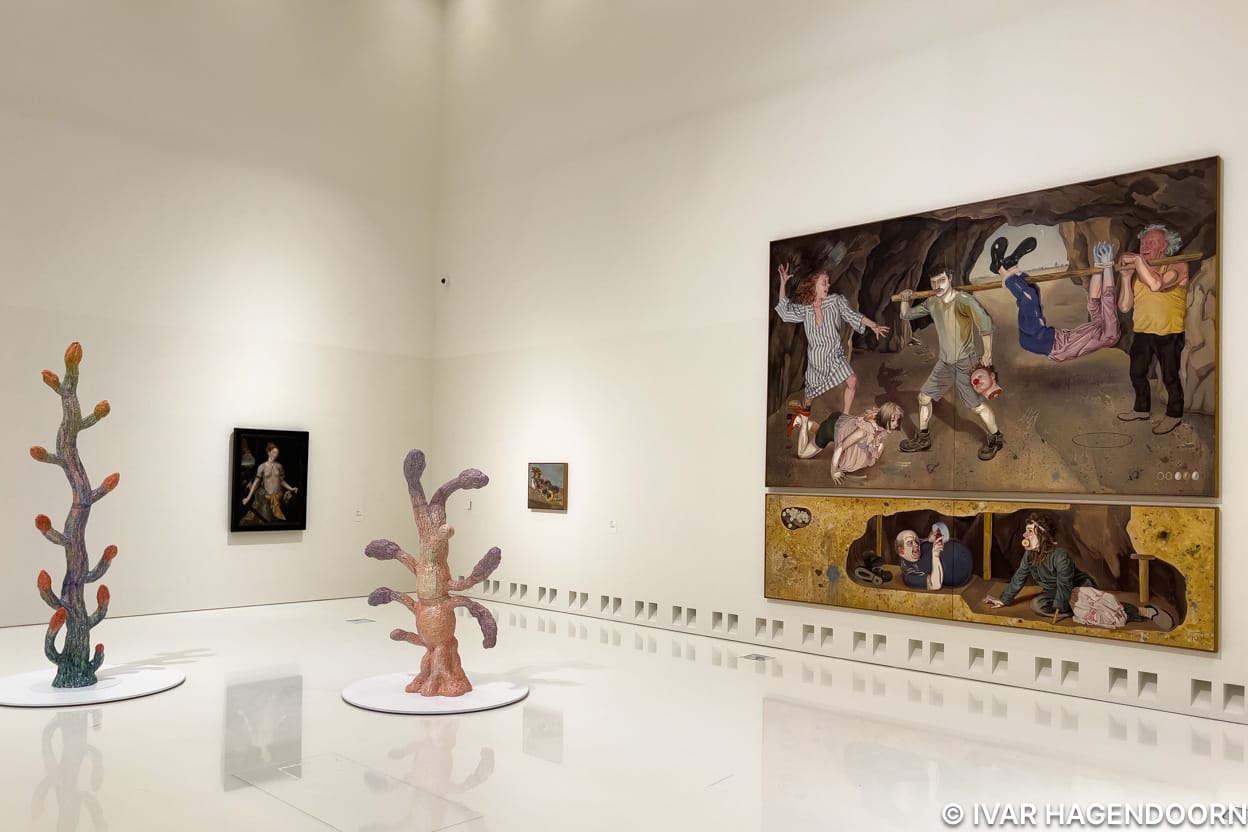
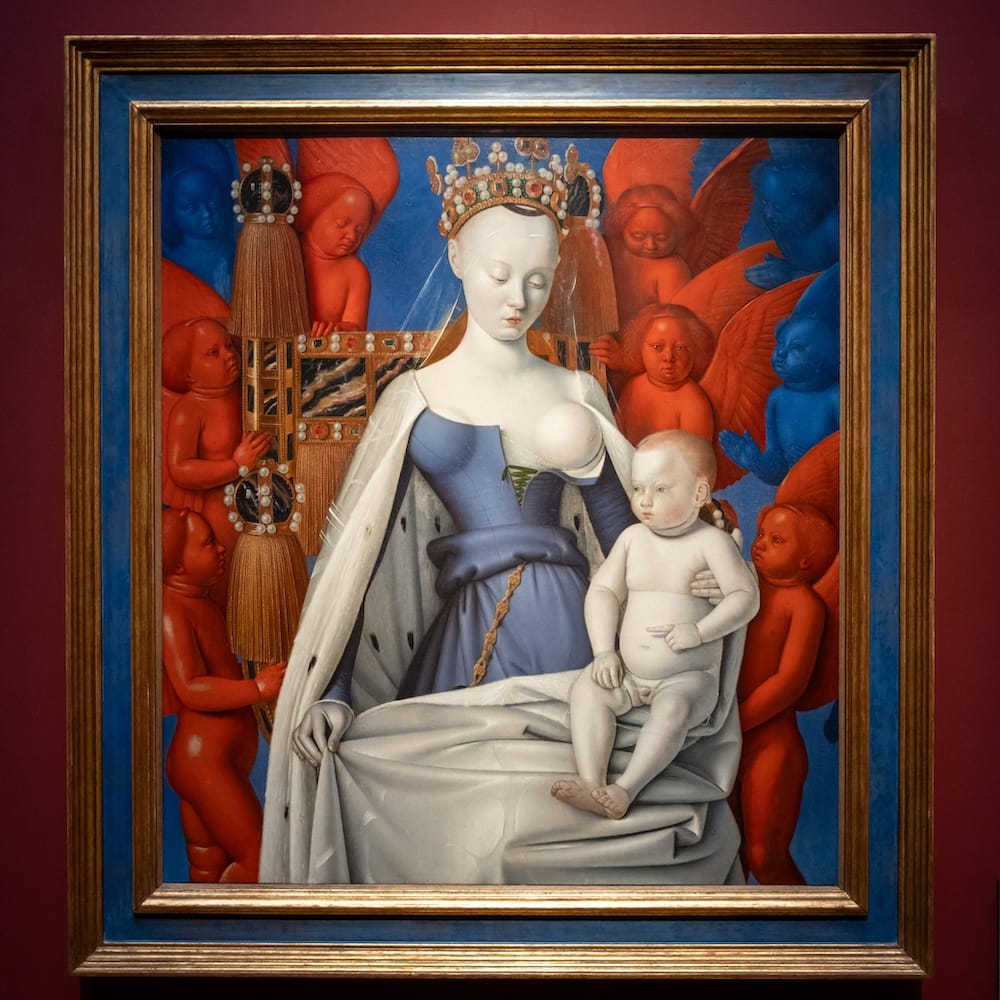
One of the highlights of the KMSKA’s collection is this intriguing painting by Jean Fouquet. The Madonna and the seraphim and cherubim almost look like plastic or wooden dolls. It was painted around 1450 but it looks eerily contemporary. Cindy Sherman also references this painting in one of her History Portraits.
